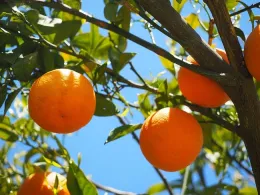
- Why are the leaves on my orange tree turning yellow?
It's common for citrus tree leaves to turn yellow in winter*. Fertilize to provide the tree with nutrients now, then watch as leaves green up in spring. Avoid fertilizing in fall, which encourages new growth favored by pest and can leave the tree susceptible to frost injury.
- How do I know if my oranges are ripe/when should I pick my oranges?
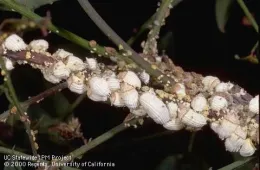
You don't have to pick all your oranges once they ripen. In fact, the best place to store oranges is on the tree, where they stay fresh! Pick as needed, unless temperatures below 28 F are predicted, then you'll want to harvest.
- What is this pest?
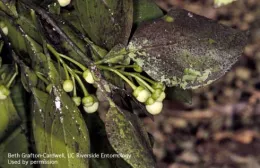
Scales and whiteflies suck plant juices and weaken the plant. Ants do two things:
- Protect pests from predators like ladybugs, parasitic wasps (very tiny wasps) and lacewings.
- “Harvest” honeydew (a sticky sugary substance excreted by these pests) for food, in a symbiotic relationship that does not include the gardener.
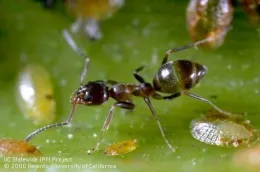
- Why are my oranges splitting?
The reason this happens is not well understood, although it's often related to changes in weather conditions. However, allowing the soil to dry out too much between irrigations is believed to result in increased splitting. Make sure your tree has a constant supply of moisture by watering monthly during the dry season.
- When should I prune my orange tree?
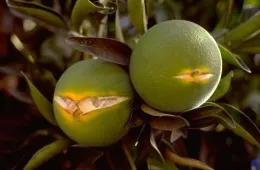
When pruning deciduous trees like peach, plum or cherry, after leaf drop, don't be tempted to prune citrus! Citrus trees are evergreen and require little if any pruning except to control size. If you'd like to keep a new citrus tree under 5 feet tall, you can carefully prune it in spring to manage the height. This way, you won't need a ladder to pick fruit again!
Avoid pruning in fall or winter, which encourages new growth favored by pests and can leave the tree susceptible to frost injury.
*if your tree leaves turn yellow and it's not winter, this may be a different problem.

